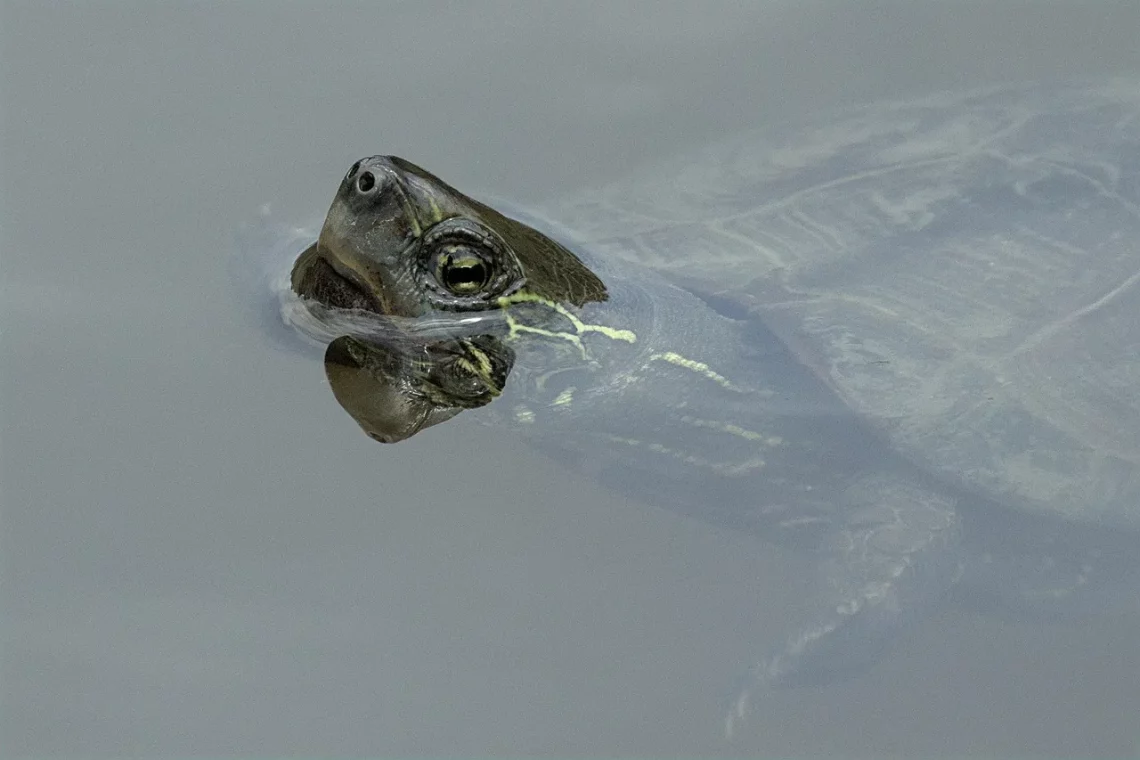
Essential Guide to Yellow Eared Turtle Care and Maintenance
The yellow eared turtle, known for its distinctive markings and engaging personality, has captured the hearts of many reptile enthusiasts. These aquatic creatures are not only visually striking but also possess unique behavioral traits that make them fascinating companions. However, like all pets, they require specific care and attention to thrive in a home environment. Understanding their natural habitat and behavioral needs is essential for providing them with the best possible care.
Originating from the wetlands of Central and South America, yellow eared turtles are adapted to a semi-aquatic lifestyle. They thrive in warm temperatures and require both water and land areas to bask, feed, and socialize. Key factors that influence their well-being include proper tank setup, diet, and general husbandry practices. As pet owners, understanding these aspects will significantly enhance the quality of life for yellow eared turtles. Their care goes beyond providing food and water; it involves creating an environment that mimics their natural habitat, which is crucial for their physical and mental health.
This guide aims to equip you with the necessary knowledge to ensure your yellow eared turtle remains healthy and happy. From tank requirements to feeding habits, every detail matters in the overall maintenance of these charming reptiles. Let’s delve deeper into what it takes to care for a yellow eared turtle effectively.
Understanding Their Natural Habitat
To provide optimal care for yellow eared turtles, it is essential to understand their natural habitat. These turtles are primarily found in slow-moving rivers, marshes, and ponds. The environment is characterized by warm water temperatures and abundant vegetation, which not only serves as food but also provides shelter and basking spots. Mimicking these conditions in captivity is crucial for their health and happiness.
In their natural setting, yellow eared turtles spend a significant amount of time in the water but also require access to dry land for basking. Basking is vital for regulating their body temperature and aiding in the absorption of ultraviolet (UV) rays, which are crucial for their calcium metabolism. Therefore, it is essential to provide a basking area in their habitat where they can dry off and soak up the sun’s rays.
The water quality in their environment should also be taken into consideration. Yellow eared turtles are sensitive to pollution and toxins, which can lead to health problems. Therefore, maintaining clean water through regular filtration and partial water changes is crucial. Additionally, using a water heater to maintain the appropriate temperature mimics their natural warm habitat, facilitating proper digestion and overall health.
Furthermore, incorporating aquatic plants and hiding spots in the tank can help replicate their natural environment. Plants not only provide food but also create a sense of security for the turtles, allowing them to exhibit natural behaviors. Hiding spots, such as rocks or driftwood, can help reduce stress and provide areas for the turtles to retreat when they feel threatened.
Creating a habitat that closely resembles their natural surroundings not only promotes physical health but also encourages natural behaviors, leading to a more enriched life for your yellow eared turtle.
Tank Setup and Maintenance
Setting up an ideal tank for your yellow eared turtle is crucial in ensuring their well-being. The size of the tank should be appropriate for the size and number of turtles you plan to keep. A general rule of thumb is to provide at least 10 gallons of water for each inch of turtle shell length. For example, a turtle with a shell length of 6 inches would require a minimum of a 60-gallon tank.
The tank should be equipped with both water and land areas. The water should be deep enough to allow the turtles to swim and dive, but it should also have a dry basking area where they can rest and absorb heat. This can be accomplished using a combination of ramps, platforms, and basking docks that allow easy access from the water.
Water quality is paramount, so a high-quality filtration system is necessary to keep the water clean and free of harmful bacteria. Regular maintenance, including partial water changes and routine cleaning of the substrate and decorations, is essential to prevent the buildup of waste and toxins. Testing the water for pH levels, ammonia, nitrites, and nitrates will help ensure a safe environment for your turtles.
Heating is another critical aspect of tank setup. Yellow eared turtles require a basking area with a temperature range of 85 to 90 degrees Fahrenheit, while the water temperature should be maintained between 75 and 80 degrees Fahrenheit. Using a reliable heater and thermometer will help maintain these temperatures consistently.
Lighting is also important; a UVB light should be provided to help turtles synthesize vitamin D3, which is crucial for calcium absorption and preventing metabolic bone disease. Ensure the UVB light is positioned correctly to cover the basking area, allowing the turtles to receive adequate exposure.
By investing time and effort into the proper setup and maintenance of your yellow eared turtle tank, you can create a healthy environment that promotes their physical and emotional well-being.
Feeding and Nutrition
Proper nutrition is vital for the health of yellow eared turtles. In the wild, these turtles are omnivorous, meaning they consume a varied diet that includes aquatic plants, insects, small fish, and crustaceans. Replicating this diverse diet in captivity is essential to ensure they receive all the necessary nutrients.
Commercial turtle pellets designed for aquatic turtles can serve as a staple food source. However, it is important not to rely solely on pellets for their diet. Fresh greens, such as romaine lettuce, dandelion greens, and kale, should be offered regularly. These greens provide essential vitamins and minerals, helping to maintain proper health.
In addition to greens, you should include protein sources in their diet. This can include live or frozen foods such as mealworms, crickets, and small fish like guppies or minnows. It’s important to vary the protein sources to prevent dietary deficiencies and provide a more balanced diet.
When feeding your yellow eared turtle, it is advisable to provide food in a separate feeding area to avoid contamination of the water. Remove any uneaten food promptly to maintain water quality.
Calcium is crucial for the development of strong shells and bones in turtles. Incorporating calcium supplements, such as cuttlebone or calcium powder, into their diet can help meet their calcium requirements. Additionally, ensure that they have access to UVB lighting, as it aids in the synthesis of vitamin D3, which is necessary for calcium absorption.
Monitoring your turtle’s weight and overall appearance can provide insights into their dietary needs. If you notice any changes in appetite or weight fluctuations, consulting a veterinarian familiar with reptiles is advisable to rule out any health issues.
By providing a well-rounded and nutritious diet, you can significantly contribute to the longevity and health of your yellow eared turtle.
Behavioral Considerations and Enrichment
Understanding the behavior of yellow eared turtles is essential for providing a nurturing environment. These turtles are generally social creatures that enjoy interaction, both with their environment and with their human caretakers. However, it is important to recognize their need for personal space and a stress-free environment.
One of the critical aspects of turtle behavior is basking. Yellow eared turtles need to bask to regulate their body temperature and metabolize nutrients effectively. Providing a comfortable basking area with adequate heat and UVB light is crucial. Observing your turtle during basking can reveal their comfort level; they will often stretch out and become more active when they feel secure in their environment.
Social interaction is also important. While yellow eared turtles can be kept together, it is essential to monitor their interactions to prevent aggression. If you notice any signs of stress or fighting, it may be necessary to separate them. Offering multiple basking spots and hiding places can help reduce territorial disputes.
Enrichment is another crucial aspect of turtle care. Providing a variety of substrates, rocks, and decorations can encourage natural behaviors such as foraging and exploration. Additionally, introducing new elements periodically can stimulate their curiosity and keep them engaged.
It is also beneficial to handle your turtle regularly, as this can help them become accustomed to human interaction. However, always approach handling gently and avoid excessive stress. Be mindful of their body language; if a turtle appears withdrawn or agitated, it may be best to give them space.
Creating an enriching environment that caters to the natural behaviors of yellow eared turtles not only promotes their physical well-being but also enhances their overall quality of life.
In conclusion, caring for a yellow eared turtle requires a comprehensive understanding of their needs, from habitat setup and nutrition to behavioral considerations. By providing a well-maintained environment and a balanced diet, you can ensure a healthy and fulfilling life for your pet. However, always remember that this article is for informational purposes only and does not constitute medical advice. For any health concerns regarding your turtle, please consult a qualified veterinarian.




